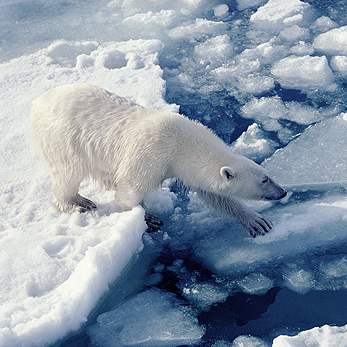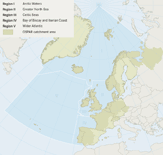Atmospheric and ocean climate are closely coupled, with the ocean playing a significant role in regulating global and regional climate and weather patterns. Increased concentrations of anthropogenic greenhouse gases are recognised to have contributed to the rise in globally-averaged atmospheric temperatures since the mid-20th century. Increased concentrations of atmospheric carbon dioxide (CO2) also make the oceans more acidic. Climate change and ocean acidification are significant threats to marine ecosystems within the OSPAR area and ultimately will affect human well-being, for example, through threats from sea-level rise and changes in biodiversity and fish stocks.
Download3 Climate Change
Impacts of climate change are now becoming evident, especially in the northern Regions (I and II). While the nature and rate of these impacts are uncertain, rising sea temperature and increasing acidification represent major threats to marine ecosystems in the OSPAR area. Mitigation and adaptation are a necessity and will alter human activities and their pressures on the sea.
OSPAR Contracting Parties should cooperate
- to reduce existing pressures under OSPAR’s Strategies and thereby increase ecosystem resilience;
- to manage and regulate increasing demand for sea-based renewable energy production and carbon capture and storage through OSPAR so as to minimise their impacts on marine ecosystems;
- to adapt OSPAR’s policies and objectives for the protection of the marine environment to account for changing pressures and increasing vulnerability of marine ecosystems;
- to enhance OSPAR’s knowledge about the vulnerability of species, habitats and ecological processes to climate change and acidification and their interaction with human pressures;
- to monitor and assess within OSPAR and in cooperation with partner organisations (e.g. ICES, IOC) ocean acidification and climate change, and to develop impact scenarios and indicators to track progression of impacts at regional scales.


